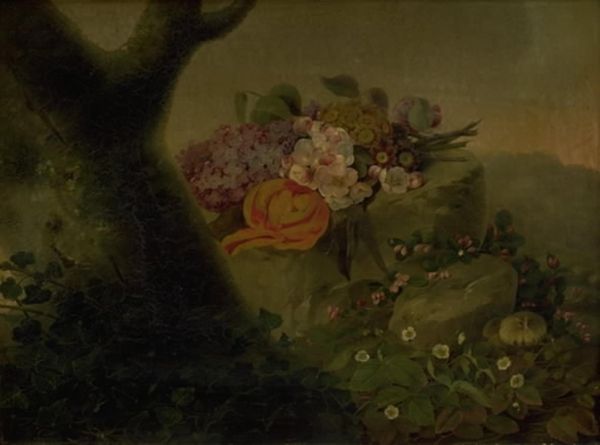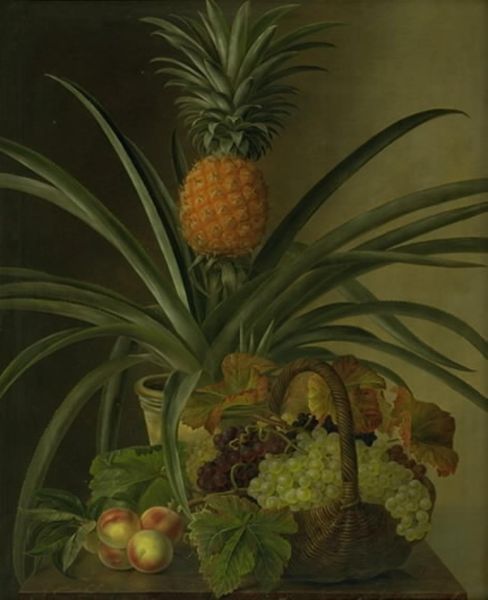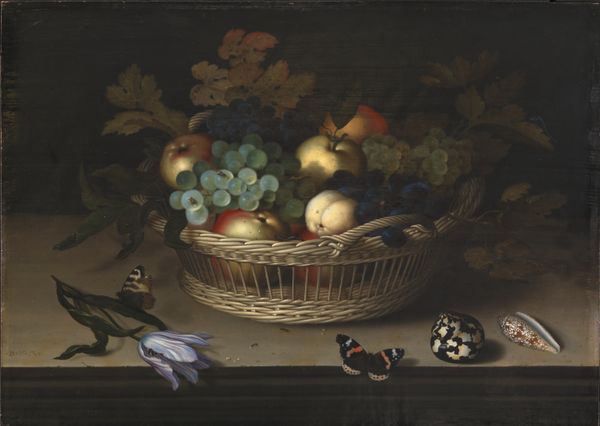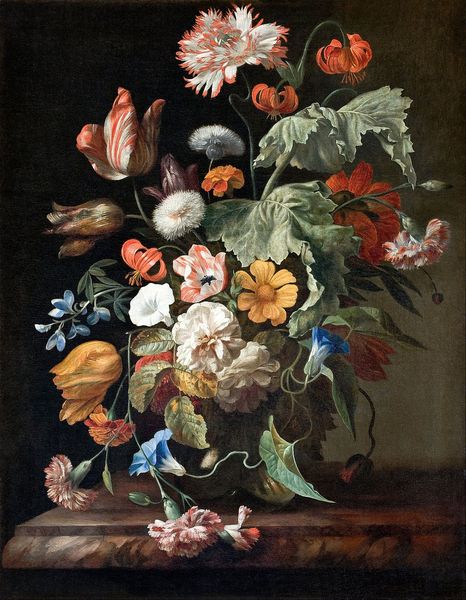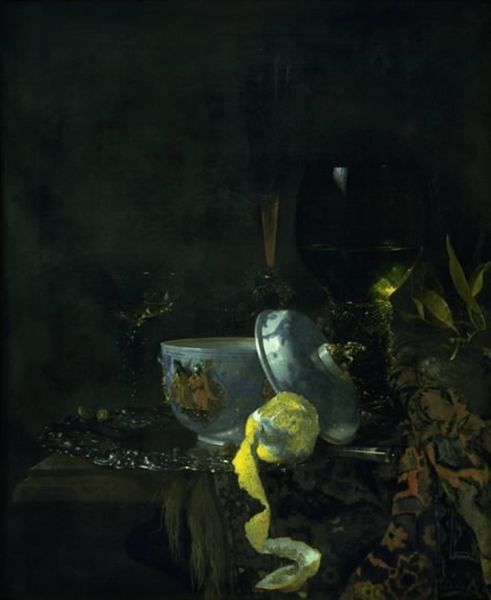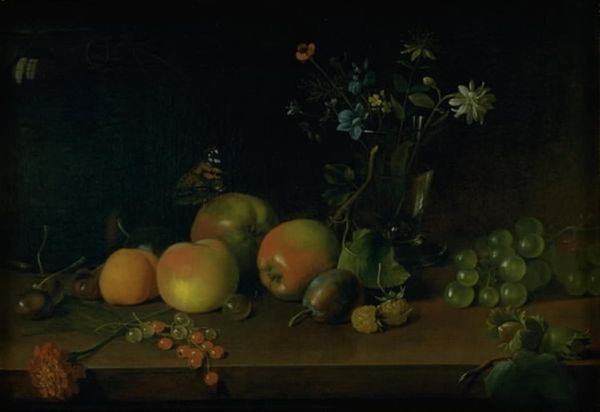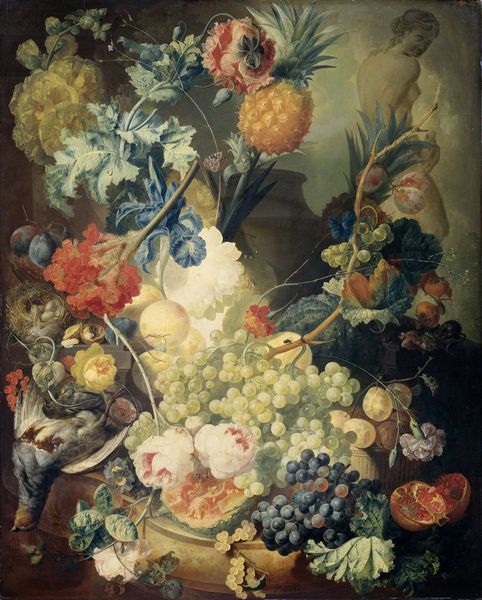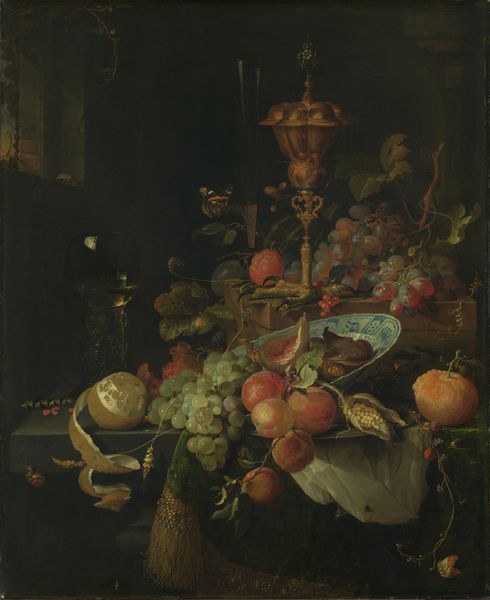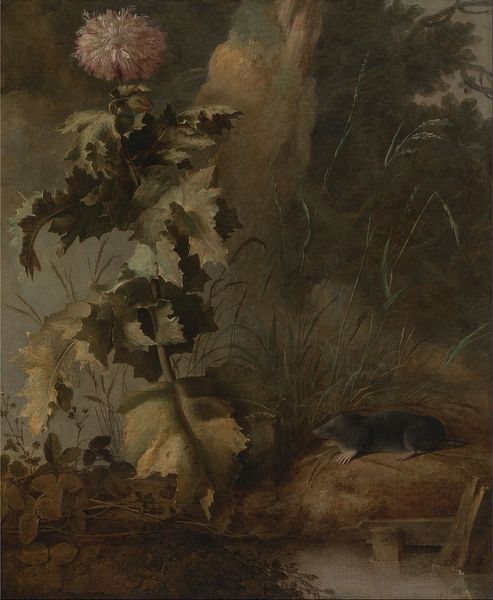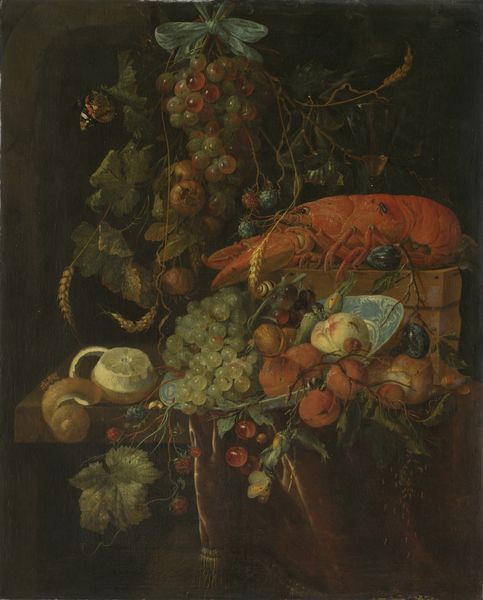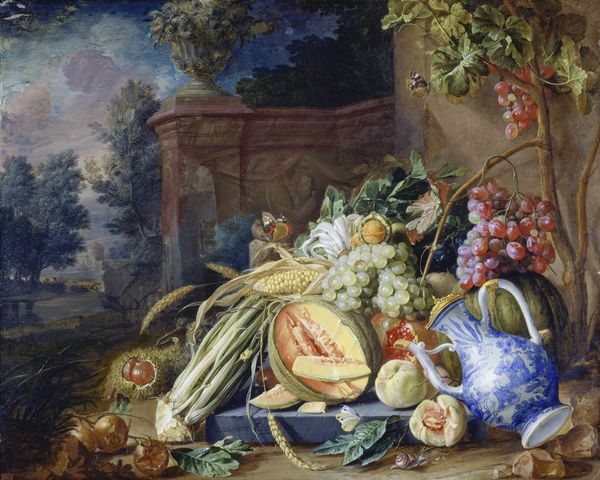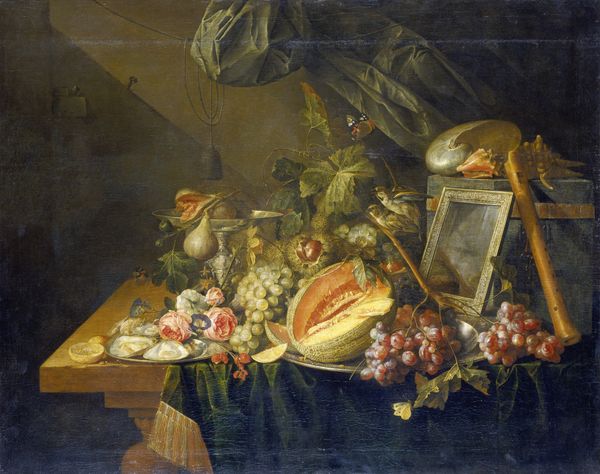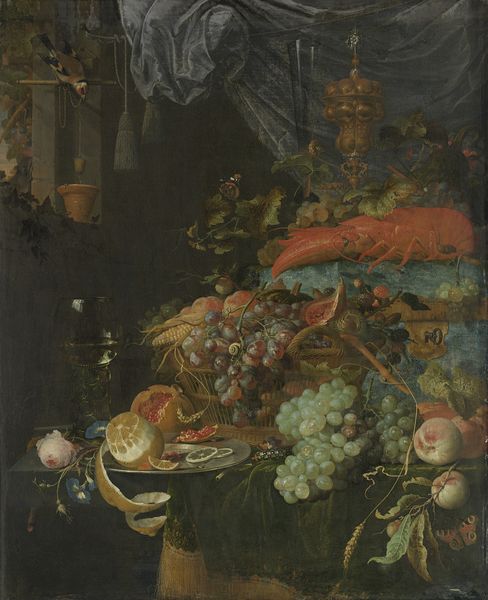
oil-paint, canvas
#
gouache
#
baroque
#
oil-paint
#
canvas
#
genre-painting
#
realism
Dimensions: 130 cm (height) x 95 cm (width) (Netto)
Curator: This captivating artwork, titled "Still Life. Vegetables," is attributed to Jean-Baptiste Gaijot Dubuisson and is estimated to have been created sometime between 1675 and 1735. It employs oil paint on canvas and is currently held at the SMK, Statens Museum for Kunst. Editor: My initial impression is one of quiet, earthy tones and almost overwhelming detail. It's so densely packed with various forms. The baroque really speaks through the dark colours that are so well displayed. Curator: Indeed. Notice the meticulous representation of ordinary vegetables – cabbages, herbs – elevated to the level of art. Dubuisson is demonstrating a trend that blurs the lines between traditional still life and what might be viewed simply as craft, in service of the merchant class. This represents their consumption patterns in domestic displays of taste and abundance. Editor: But let's focus on how he achieves this elevation through strictly formal means. The textures are incredible, creating contrast between the coarse, rough surfaces and smooth leaves. And the colour palette is superb in its simplicity; he takes what appears to be muted and achieves brilliance by controlling value. Curator: But doesn't that colour palette speak more to its accessibility for bourgeois collectors and less of something meant for true royalty? Think of the ease by which this work could be reproduced and its reflection on a society geared more towards open commerce of images than restricted consumption? Editor: While I see your point, consider the way he uses composition to guide the viewer’s eye. The arrangement directs one through the intricate structure of forms; even in apparent chaos, there's formal, well-placed balance. See how light falls dramatically on the copper? Curator: Absolutely, and the contrast between the manufactured pot and organic plants reveals a societal shift – a new reliance on commercial goods which redefines daily practices related to labor and consumption during this era of burgeoning trade routes in early modernity. Editor: Interesting, considering these objects could be deconstructed almost geometrically. The painting then becomes more than mere depictions; it creates an allegorical tableau on commodification and control as social commentaries on form through art. Curator: Very perceptive. I’ve come to look at Dubuisson with new insight and awareness regarding social shifts surrounding food access at this time thanks to your points, but am also still aware of what impact this has for access and commodification as a cultural object, even today. Editor: And for me, I’m taking away an entirely new appreciation for both colour work within this artistic creation that, in many ways, reflects its social setting to such detailed effect!
Comments
No comments
Be the first to comment and join the conversation on the ultimate creative platform.
